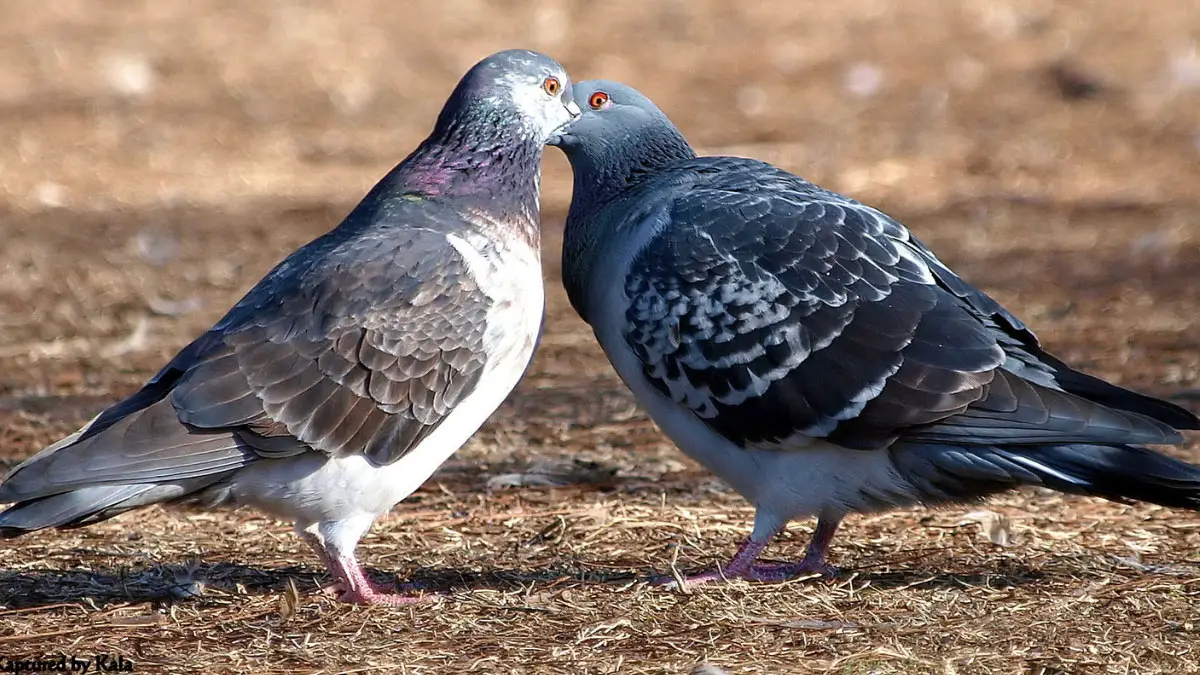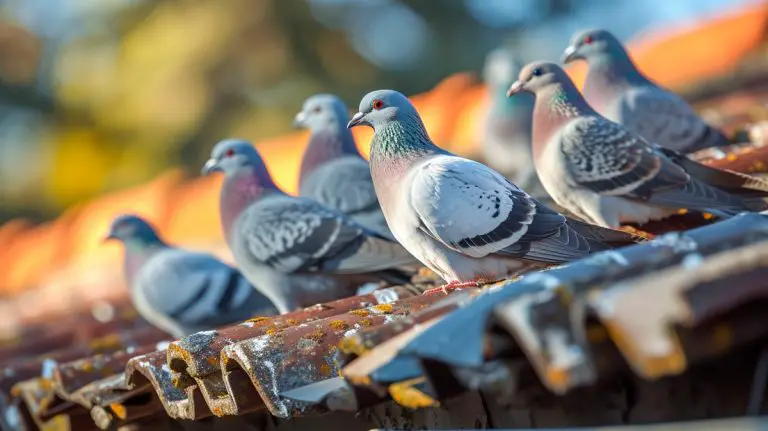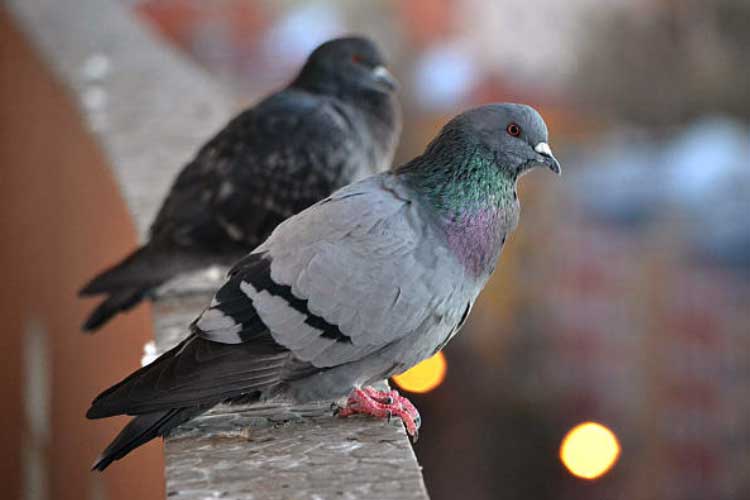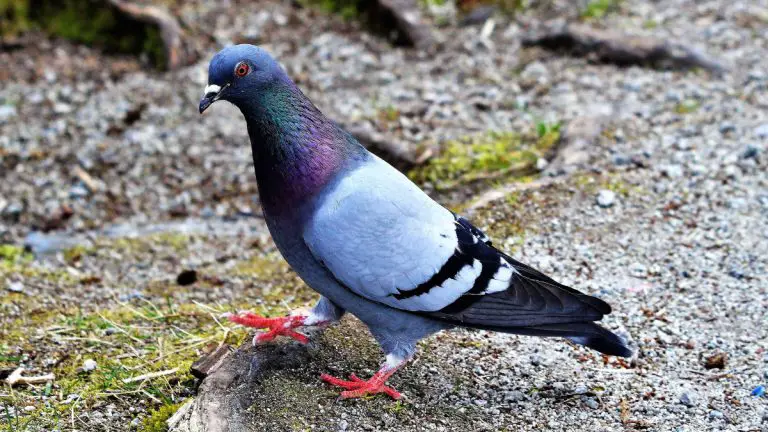Pigeon Courtship: The Intricate Dance of Attraction
Pigeon courtship is an intricate behavior expressed by pigeons to attract their mates. This courtship plays a crucial role in the reproduction of pigeon species. The male and female pigeons engage in various behaviors and activities to attract and bond with potential mates. These include vocalization, feather display, and so on.
Understanding pigeon courtship and behavior is highly crucial for bird enthusiasts, experts, and researchers. This understanding helps people to understand the characteristics and reproduction mechanisms of pigeons. Not only that, but it also helps researchers and enthusiasts to know about animal communication and interaction tactics.
In this guide, we will explore the details of pigeon courtship and reproduction behavior. We will discuss several key pieces of information relevant to avian ecology research. So, stay tuned till the end of the blog!
Visual Displays Exhibited By Pigeons for Courtship
Visual displays play an essential role when it comes to pigeon courtship. These visual displays help pigeons to attract mates and bond with them. Let us take a look at some of the most common visual displays in pigeons.
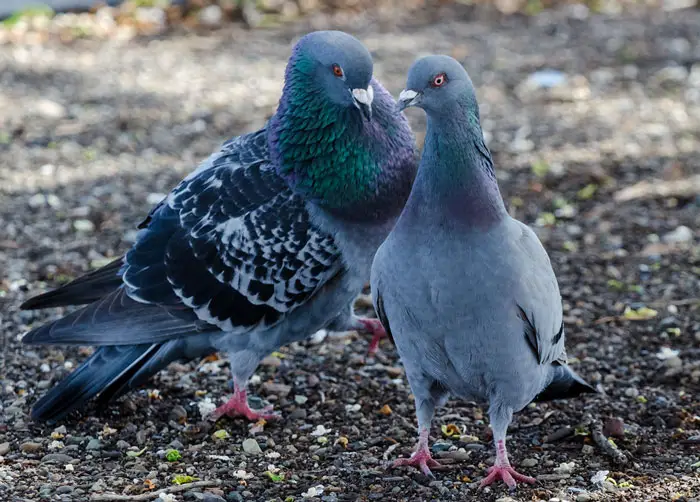
Wing Flapping
According to animal behavior researchers, one of the most common visual displays seen among pigeons is wing flapping. Pigeons often flap their wings as a display to impress potential mates and form a bond. They also often outstretch their wings to make themselves look bigger and stronger.
Tail Bobbing
Tail bobbing is a prime method of expressing courtship to pigeons of the opposite gender. In this method, the birds lower their heads and raise their tails upward. This creates a unique bobbing motion that helps to attract potential mates. It is seen as a sign of availability and interest.
Head Movements
Another interesting visual display of pigeon courtship is the movement of the head. The birds often move their heads in a nodding motion or side to side. These movements help to draw the eyes of other pigeons toward the displaying bird. It typically attracts attention to the eyes or feathers.
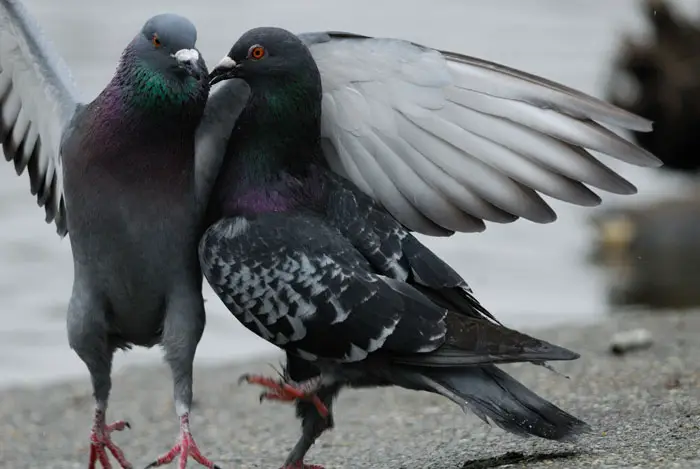
Potential Consequences Of Visual Display
The visual displays by the pigeons often have potential consequences when it comes to choosing mates or reproducing. Here are a few potential consequences of visual display.
Attracting Potential Mates
One of the biggest consequences of visual display is to attract potential mates. These displays help to increase mating chances and result in successful reproduction. Colorful displays of feathers, puffing out bodies, pigeon dance, etc., lead to more successful mating.
Compatibility
The visual displays help to assess the compatibility of pigeons with their potential mates. By seeing the displays, male and female birds find out whether they are a good match for each other or not.
Signal Dominance
Other than finding mates, the pigeons help to signal dominance and establish social status. It makes the male birds more attractive to females, increasing the success rate of mating and reproduction.
Vocalizations Used By Pigeons During Courtship
During courtship, the pigeons rely on a wide range of vocalizations. These sounds include cooing, trilling, and many more to attract their mates. Check out some of the best vocalizations during pigeon pursuit.
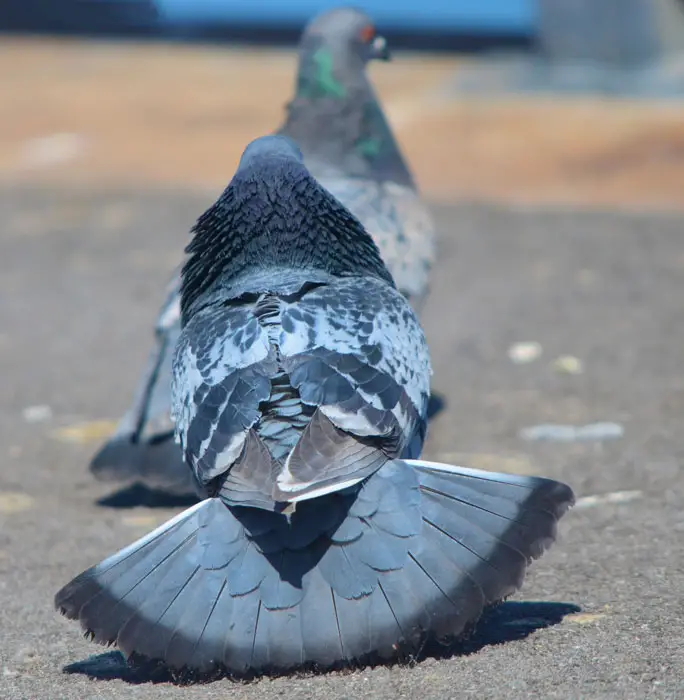
Cooing
Male pigeons typically rely on low-pitched cooing during courtship. It is a repetitive signal showing the male pigeon’s interest and availability in mating.
Trilling
While the cooing is a low-pitched sound, the trilling is high-pitched. It is a sound of arousal or excitement, alerting potential mates to respond. The trilling vocalization tactic is used by both male and female pigeons.
Grunting
The grunting noise is typically made by the female pigeons. This sound is usually a response to the calls or vocalization of male pigeons. It shows a sign of availability and signals the mates for bonding.
Role Of Vocalization In Mate Selection
Vocalization is an essential aspect when it comes to courtship and choosing mates among pigeons. Through these sounds, the pigeons engage in a communication behavior that allows them to find mates, bond, and reproduce, as per animal behavior experts.
These pigeon vocalizations are used by both male and female birds to express their willingness and availability of mating.
Other than the visual displays, such as wing flapping, bobbing, and so on, male pigeons rely on trilling and cooing. These vocalizations allow the male pigeons to send signals over to female pigeons that they are available for mating.
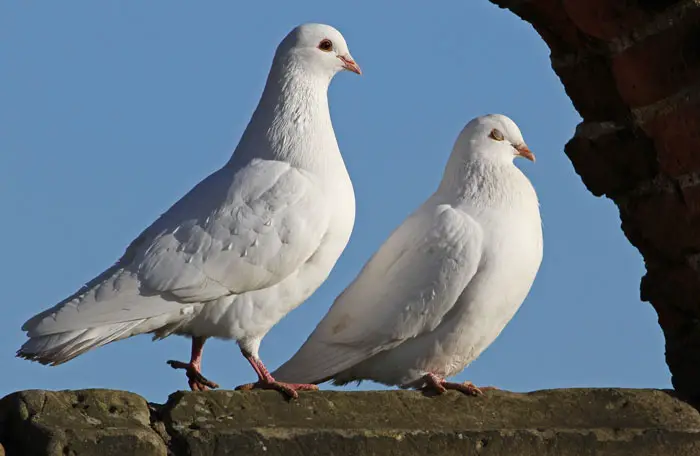
Female pigeons often respond to these calls through methods such as trilling and grunting. High-pitched trilling shows the readiness of the pigeons for mating and forming pigeon breeding pairs.
However, oftentimes, both male and female pigeons resort to billing to bond and reproduce. Here, the males and females touch their beaks with each other. This creates a soft sound that signals a bond between potential mates.
Ways How Vocalization Indicates Mate Quality
Vocalizations among pigeons can significantly impact mate guarding and quality. This impact typically occurs based on the timing and quality of the vocalization methods. Let us take a look at how the methods impact the quality.
- Consistency
According to studies and research, both male and female pigeons prefer mates with consistent vocalization. This is because consistency refers to the physical health and strength of the pigeons. Birds with consistent cooing or trilling are fitter and healthier compared to the other pigeons.
- Frequency
The frequency of the vocalization also impacts the overall mate quality among the pigeons. When the male pigeons engage in competition with other males for courtship and mating, they often increase the frequency of their calls. This helps to attract the attention of female pigeons while asserting dominance and mate competition.
- Duration
The duration of the vocalization also increases or decreases the reproductive success rate for mating. Typically, pigeons with a higher calling duration help to attract the attention of potential bonds and mates. Not only that, but it also helps to display their physical fitness to other birds.
Physical Interactions
During pigeon mating rituals, the pigeons engage themselves in a wide range of physical interactions. These interactions typically include billing, preening, and many more.

Billing
To showcase their mating success or strengthen their social bond, pigeons often rub their beaks with each other. It makes a soft sound and is usually followed by cooing, trilling, etc.
Preening
Pigeons often nibble on the feathers of their mates gently. This is called preening, and it is a great way of strengthening the bond. It is a communication method of affection and also a way of grooming.
Bowing
Oftentimes, male or female pigeons bow their heads down in front of other pigeons. It is a way of showing interest and is also a sign of respect and submission among the birds.
Specific Physical Interactions During Courtship
During courtship, both male and female pigeons engage in several physical interactions. This helps them to attract mates while improving their social bond with other pigeons.
To attract potential female mates, male birds often conduct aggressive behavior. This signals their readiness and also expresses their affection toward the other pigeons.
On the other hand, female pigeons offer passive behavior when courting male pigeons. This signals their availability for mating, along with their interest in the bond.
Potential Consequences Of Physical Interaction Variations
The physical interactions with the pigeons often have potential consequences on mate attraction, reproduction success, and parental investment. Typically, male pigeons with aggressive interactions often have a higher chance of building a bond. Similarly, female pigeons with passive behavior attract more successful mates.
However, aggressive and passive behavior can also harm the bonds with other pigeons. Excess aggressiveness often scares off the female. On the other hand, excessive passive interaction shows discouragement in mating.
Mate Selection And Reproductive Success
To ensure proper reproduction success, both mate selection and courtship behavior are essential. Pigeons typically form long-term bonds with other pigeons for both mating and reproduction. If the pigeons do not find a proper mate, the reproduction rate will be significantly lower.

Lack of bonding and compatibility between the pigeons will impact the partnership, along with other activities. These include nest building, foraging, egg incubation, and other bird mating rituals.
Factors Influencing Pigeon Mate Selection
Several factors influence the mate selection process among pigeons. These factors usually include mate quality and compatibility also play significant roles in mate selection.
- Mate Quality: Mate quality typically refers to the health, fitness, etc., of the pigeons. Birds with strong bodies, physical fitness, and so on attract birds with similar qualities. This helps to strengthen the bond while ensuring successful pigeon mate selection.
- Compatibility: Compatibility refers to the understanding between two pigeons. Typically, temperament, behavior, and many more impact compatibility. Proper compatibility among mates is essential to ensure proper pigeon courtship displays.
Potential Consequences Of Mate Selection And Courtship Behavior
Mate selection and animal mating behavior can have a significant impact on the reproduction success of pigeons. If the pigeon attracts a low-quality or weak mate, the reproduction rate will be lower, resulting in weak offspring, unhatched eggs, etc.
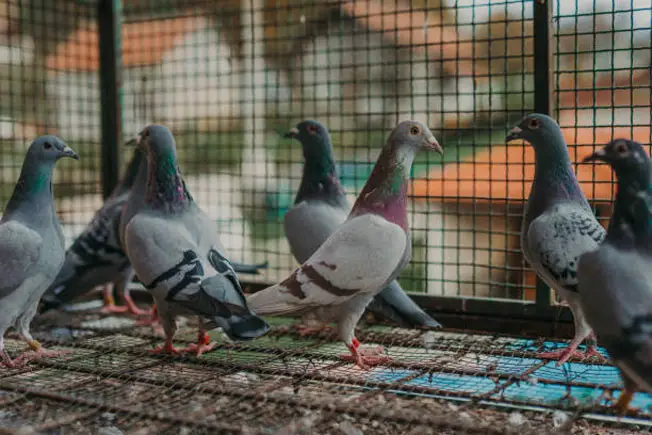
As per avian physiology, pigeons with strong physical qualities and mating selection will be able to attract high-quality mates. This will not only improve the bond between the birds but will also increase the success rate of avian reproduction.
However, weak-quality pigeons often find it hard to attract high-quality mates. This results in compatibility issues in sexual selection and a low rate of success.
If you’re interested in learning more about the role of pigeons in the urban ecosystem and understanding pigeon mating behaviors, you may find our articles on the role of pigeons in the urban ecosystem and understanding pigeon mating behaviors informative. Our article on the role of pigeons in the urban ecosystem explores how pigeons adapt to and thrive in urban environments, and their ecological significance in maintaining biodiversity. Meanwhile, our article on understanding pigeon mating behaviors provides insights into the fascinating courtship rituals and behaviors exhibited by pigeons during the mating season. These articles provide valuable information about the ecological role of pigeons in urban settings and their unique mating behaviors.Conclusion
Pigeon courtship is highly important to make sure that the birds form a successful bond and quality reproduction. We covered all the details of pigeon courtship, bird behavior, and their methods of attracting mates.
However, further research and study on this courtship are crucial to ensure a clear understanding of the behavior and ecological contribution. Further reading will help bird research institutions to know more about avian ecology and reproduction.
